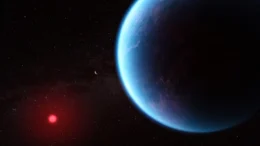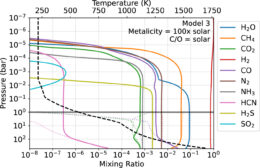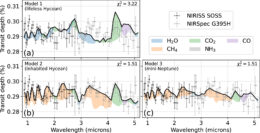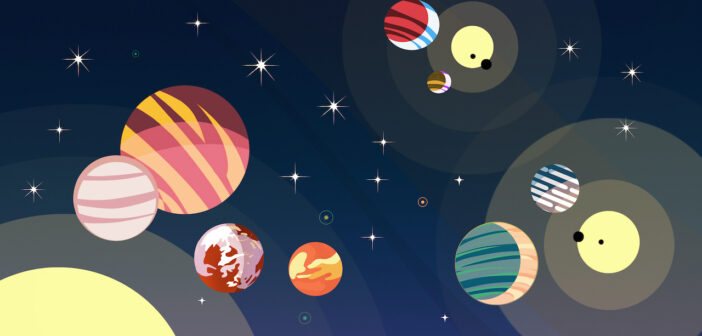Exoplanet K2-18b made headlines when researchers reported that JWST observations of the planet were consistent with a habitable ocean world. Now, another team has published a different interpretation of the data, suggesting that the purported water world is instead a gas-rich planet with no habitable surface.
Everybody Wants to Rule the Find a Habitable World

An artist’s impression of K2-18b as an ocean world. [NASA, ESA, CSA, Joseph Olmsted (STScI)]
To make matters more interesting, the same research team reported weak evidence for dimethyl sulfide, a compound that on Earth forms almost exclusively due to life. This led many onlookers to the eyebrow-raising conclusion that K2-18b is not just habitable but inhabited.
These intriguing interpretations, however, are far from settled. Is K2-18b truly a habitable ocean world, or could alternative explanations fit the JWST data equally well?

Example simulation output for K2-18b as a gas-rich planet without a habitable surface. Click to enlarge. [Wogan et al. 2024]
Water World or Gas Planet?
A team led by Nicholas Wogan (NASA Ames Research Center and University of Washington) tackled this question by applying two sets of models to the JWST data. The first set describes rocky planets with surface oceans, with and without life, and the second set describes gaseous planets without a surface and without life. The models predict the planet’s photochemistry — chemical reactions in the atmosphere driven by photons from the host star — and climate.
Wogan’s team found that K2-18b is unlikely to be a lifeless water world, since this type of planet wouldn’t contain enough methane in its atmosphere to produce the signal seen in the JWST observations. Intriguingly, a water world with microbial life is more promising: acetotrophic methanotrophs — a tongue-twisting name for simple methane-producing organisms — may be able to produce the supply of methane seen in the planet’s atmosphere.
Not So Fast…

JWST transmission spectra (black and gray points with error bars) and modeled spectra for K2-18b as a lifeless ocean world (top left), an ocean world with life (bottom left), and a lifeless gas-rich planet (bottom right). Click to enlarge. [Wogan et al. 2024]
This isn’t the last word on K2-18b — there are features in the planet’s spectrum that aren’t well fit by a lively ocean world or a lifeless gas-rich planet, and both models have their challenges. Future data from JWST might dredge up a detection of ammonia, which would point to a gaseous planet, or dimethyl sulfide, which would tilt the scales considerably toward an inhabited water world. In the meantime, the hunt for habitable planets goes on.
Citation
“JWST Observations of K2-18b Can Be Explained by a Gas-Rich Mini-Neptune with No Habitable Surface,” Nicholas F. Wogan et al 2024 ApJL 963 L7. doi:10.3847/2041-8213/ad2616

